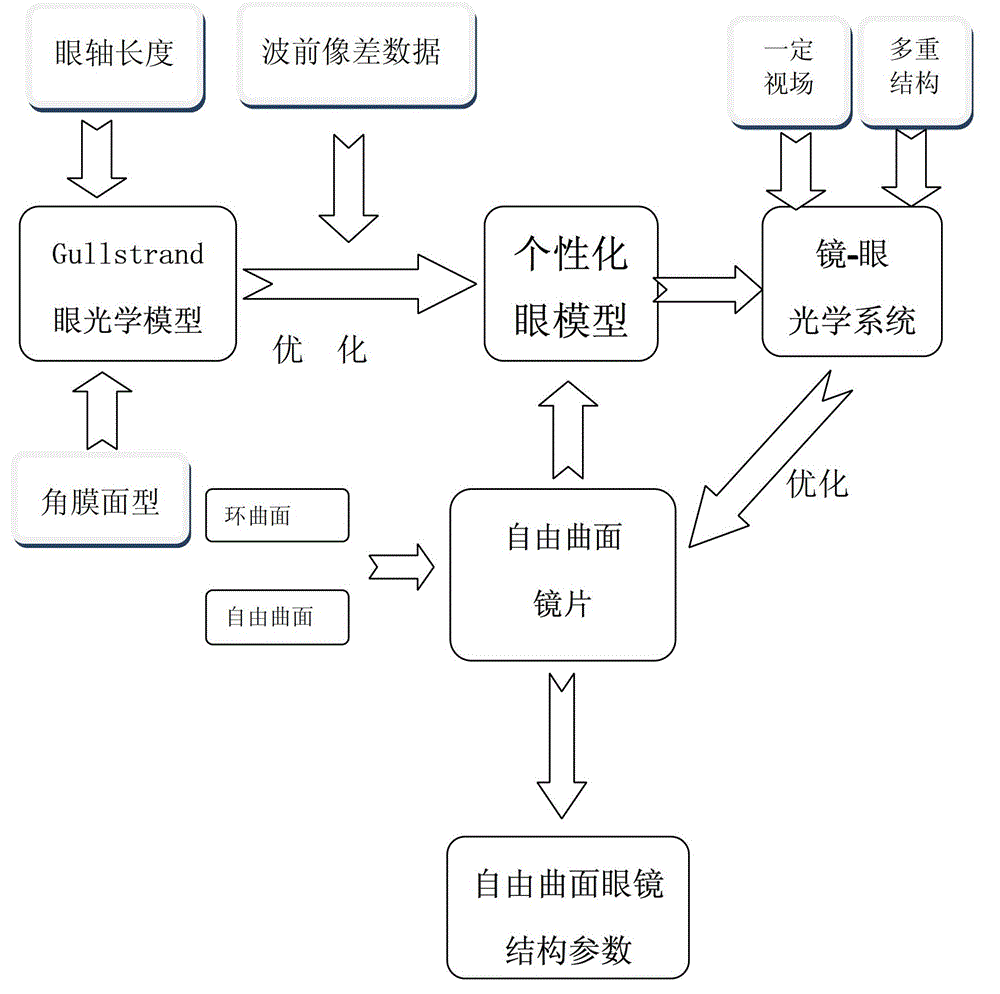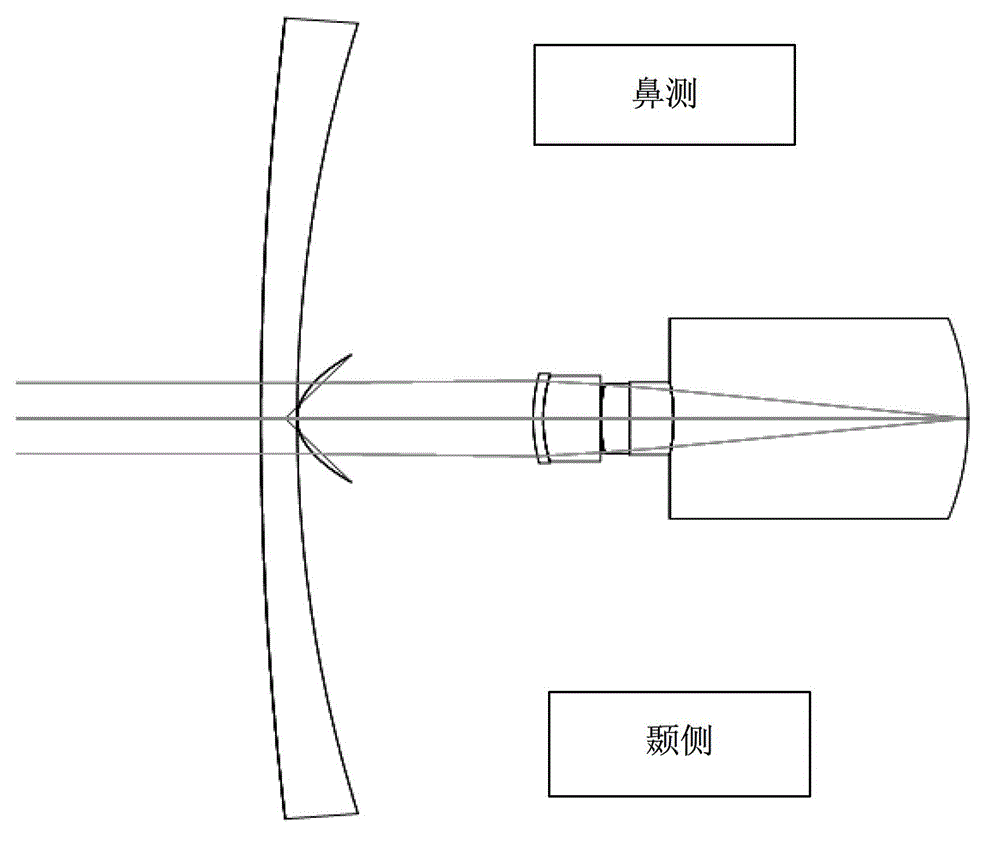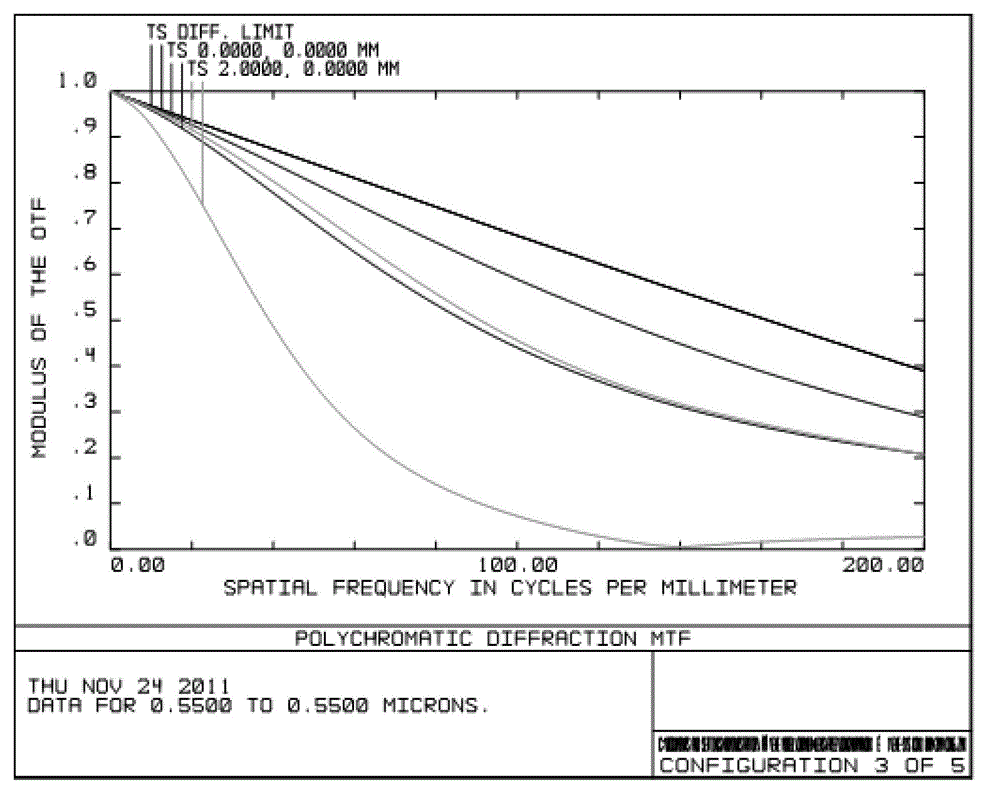Design method of free-form surface glasses based on wave-front technology
A design method and technology of curved surfaces, applied in the field of vision correction, can solve the problems of failing to give lens fitting results, no correction effect, etc.
- Summary
- Abstract
- Description
- Claims
- Application Information
AI Technical Summary
Problems solved by technology
Method used
Image
Examples
Embodiment Construction
[0039] Embodiments of the present invention will be described in further detail below in conjunction with the accompanying drawings.
[0040] A design method for free-form glasses based on wavefront technology, such as figure 1 shown, including the following steps:
[0041] Step 1: Substitute the length data of each part of the eye axis into the Gull strand-Le Grand eye optical model;
[0042] In this step, use conventional means (such as medical ultrasonic thickness gauge) to measure the length of each part of the eye axis to the eye axis, and obtain the length data of each part of the eye axis: the length of the anterior chamber, lens, and vitreous body in the direction of the eye axis thickness.
[0043] This step is just to substitute the above data into the Gull strand-Le Grand eye optical model;
[0044] Step 2: Use the corneal surface curvature and corneal topography data to replace the cornea in the Gullstrand-Le Grand eye optical model to simulate the corneal surfa...
PUM
 Login to View More
Login to View More Abstract
Description
Claims
Application Information
 Login to View More
Login to View More - R&D
- Intellectual Property
- Life Sciences
- Materials
- Tech Scout
- Unparalleled Data Quality
- Higher Quality Content
- 60% Fewer Hallucinations
Browse by: Latest US Patents, China's latest patents, Technical Efficacy Thesaurus, Application Domain, Technology Topic, Popular Technical Reports.
© 2025 PatSnap. All rights reserved.Legal|Privacy policy|Modern Slavery Act Transparency Statement|Sitemap|About US| Contact US: help@patsnap.com



